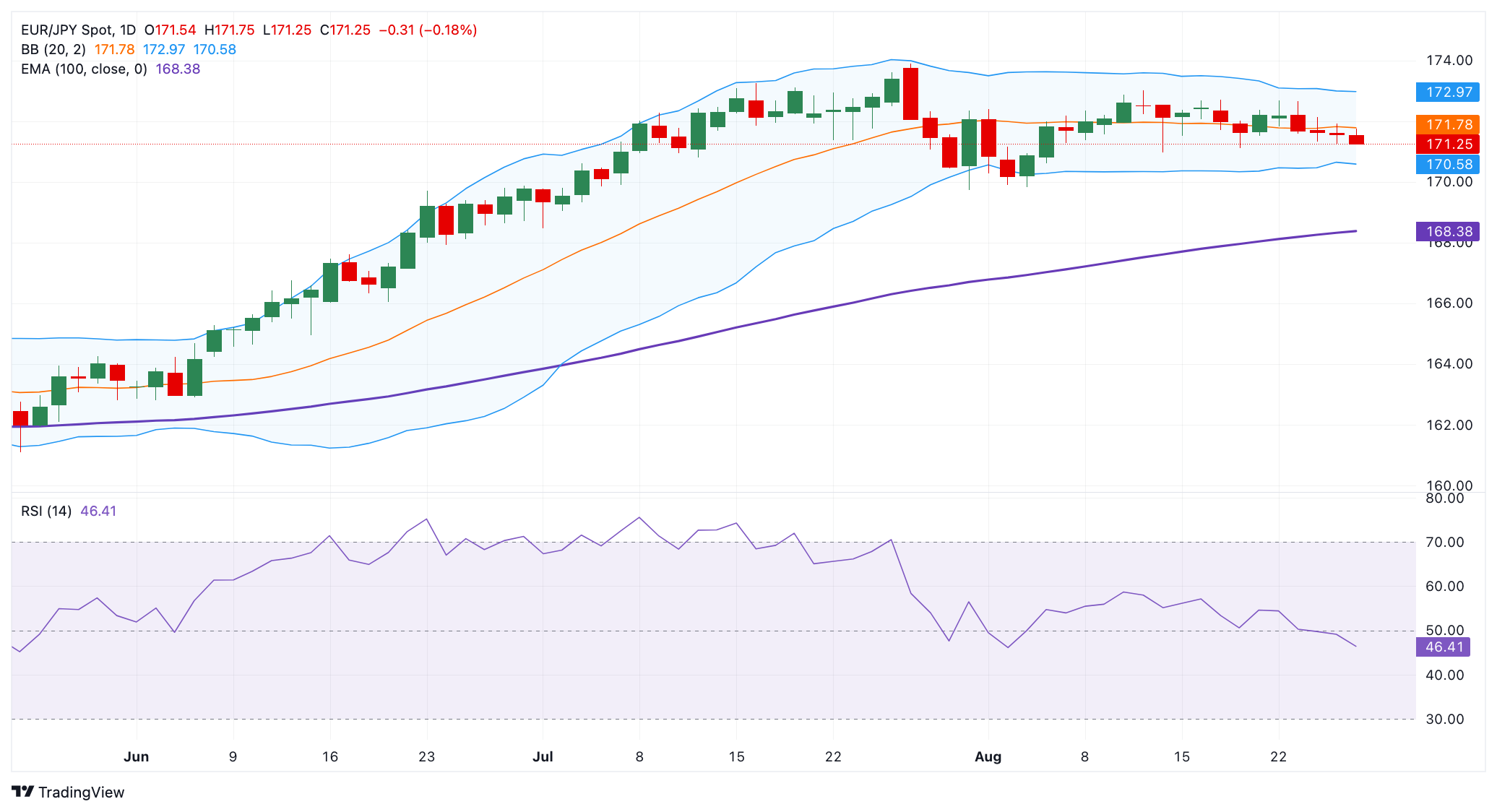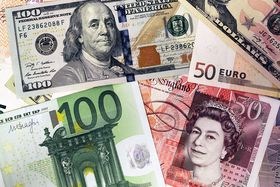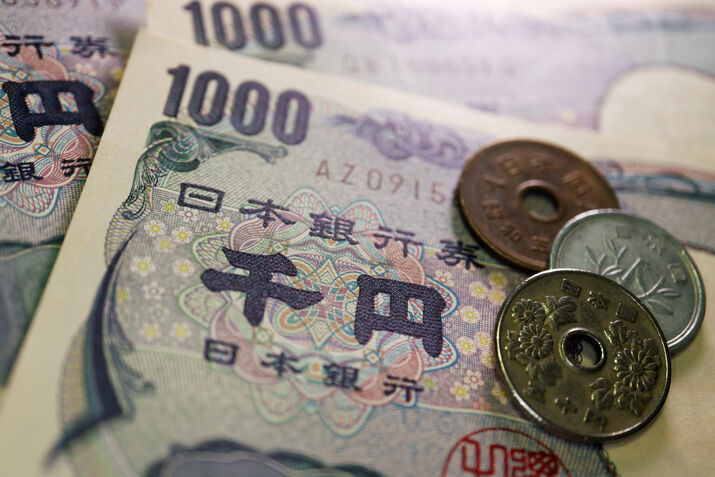EUR/JPY Price Forecast: Positive view prevails above 171.00, eyes on French politics

- EUR/JPY drifts lower to near 171.25 in Thursday’s early European session.
- Positive view of the cross prevails above the 100-day EMA, but bearish RSI indicator warrants caution for bulls.
- The immediate resistance level emerges at 172.67; the first support level to watch is 170.60.
The EUR/JPY cross loses momentum to around 171.25 during the early European session on Thursday. The Euro (EUR) weakens against the Japanese Yen (JPY) amid fears of a French political crisis. France is braced for a new political crisis as the minority government of François Bayrou appears almost certain to be toppled in a confidence vote next month, amid deep political divisions over an unpopular austerity budget and debt-reduction plan.
Technically, the constructive outlook of EUR/GBP remains in place as the cross is well-supported above the key 100-day Exponential Moving Average (EMA) on the daily chart. Nonetheless, further consolidation or temporary sell-off cannot be ruled out as the 14-day Relative Strength Index (RSI) stands below the midline near 46.65, displaying bearish momentum in the near term.
On the bright side, the first upside barrier emerges at 172.67, the high of August 25. Sustained trading above this level could pick up more momentum and aim for 173.00, representing the upper boundary of the Bollinger Band and a round figure. Further north, the next resistance level is seen at 173.90, the high of July 28.
In the bearish case, the lower limit of the Bollinger Band of 170.60 acts as an initial support level for EUR/JPY. A breach of this level could drag the cross toward the 170.00 psychological level. The additional downside filter to watch is 169.82, the low of August 5.
EUR/JPY daily chart

Japanese Yen FAQs
The Japanese Yen (JPY) is one of the world’s most traded currencies. Its value is broadly determined by the performance of the Japanese economy, but more specifically by the Bank of Japan’s policy, the differential between Japanese and US bond yields, or risk sentiment among traders, among other factors.
One of the Bank of Japan’s mandates is currency control, so its moves are key for the Yen. The BoJ has directly intervened in currency markets sometimes, generally to lower the value of the Yen, although it refrains from doing it often due to political concerns of its main trading partners. The BoJ ultra-loose monetary policy between 2013 and 2024 caused the Yen to depreciate against its main currency peers due to an increasing policy divergence between the Bank of Japan and other main central banks. More recently, the gradually unwinding of this ultra-loose policy has given some support to the Yen.
Over the last decade, the BoJ’s stance of sticking to ultra-loose monetary policy has led to a widening policy divergence with other central banks, particularly with the US Federal Reserve. This supported a widening of the differential between the 10-year US and Japanese bonds, which favored the US Dollar against the Japanese Yen. The BoJ decision in 2024 to gradually abandon the ultra-loose policy, coupled with interest-rate cuts in other major central banks, is narrowing this differential.
The Japanese Yen is often seen as a safe-haven investment. This means that in times of market stress, investors are more likely to put their money in the Japanese currency due to its supposed reliability and stability. Turbulent times are likely to strengthen the Yen’s value against other currencies seen as more risky to invest in.







